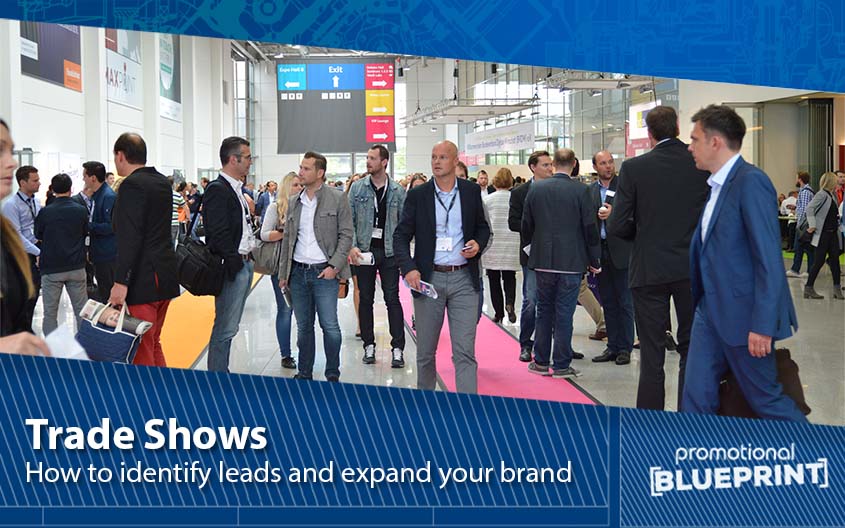
No matter what type of business you’re running, you will want to attend a trade show or two. These events are an excellent way of gaining prospective clients, as well as expanding your brand and upstaging the competition. Moreover, you can also gain additional future collaborators and expand your brand further.
Naturally, for any trade show, you will want to provide the attendees with an engaging experience. That means bringing lots of company branded products, having a few panels ready, and making sure your promotional material is prominently featured everywhere.
But let’s not forget the most important part of any trade show: actually talking to the attendees and identifying possible leads. Even industry veterans have issues with these elements, and a single error can lose you a potential investment worth tens of thousands of dollars, at the very least.
So, how will you talk to your prospects and figure out the leads? Well, this article is here to help you find all the right answers.
Different Types of Questions
When an attendee approaches your booth, your coworkers, or even just you, small talk can only get you so far. Just put yourself in their shoes. If you were attending a booth and the first thing you hear from the presenter is ‘Lovely day out, innit?’, you’ll be walking away.
So, instead of having a cliched approach or just improvising without a plan, you will need a few good sets of questions. Generally speaking, we can classify these questions into four major groups:
- Opening questions (openers)
- Investigative questions
- Demonstrative Questions
- Closers
Openers
These questions are the first ones you’ll ask, i.e. they will open the conversation with the attendee. As such, their goal is to figure out what that attendee wants or needs out of the event you’re both attending. So, here are some excellent openers for you to try:
- What do you hope to achieve by being at this fine event?
- What would you say are some of the biggest challenges you have to face with your current product or service?
- Have you heard of our brand before, and if so, where?
Investigative Questions
Investigative questions are, in a sense, like the openers. In other words, you will use them to probe your potential lead and see what they require. Think of it as a bite-sized version of market research.
The questions you want to ask at this stage are:
- What products or services are you currently using?
- What do you enjoy about that product or service?
- Is there anything you dislike about that product or service?
- How much money are you aiming to spend on future products or services?
- Would you mind listing the top three must-haves for said products or services?
- Can you also list what you think are the top three negatives that the industry can do without?
Demonstrative Questions
As your conversation progresses, you will want to keep the attendee engaged by asking them other appropriate questions. Construct those in such a manner that they put your product front and centre. Furthermore, keep track of their interest in what you’re offering, and take all feedback into account.
Regarding the questions themselves, they would look something like this:
- Do you have any opinions on the scope and capabilities our products or services offer?
- How would you compare our products or services to those you’re currently using?
- Are there any concerns regarding our products or services?
Closers
Finding a good way to close a line of questions is never easy. As a brand owner, you will need to pose these closing questions as if you were promoting your company, but in a natural, non-blatant way. The attendee has to feel like they are having a normal conversation with you, so you can’t sound like you’re trying to sell them something.
Here are a few examples of subtle, successful closers:
- How do the higher-ups in your company decide on which vendors are worth their time?
- Is there any other information we can help you with?
- Would you want to set up an appointment after the event so we can discuss the matter further?
That last question, in particular, is a powerful and subtle call to action, and it’s especially effective if your attendee does portray proper interest in what you’re offering. If you can, ask the event organisers to use their conference rooms for some private one-on-one talks with attendees. However, if that’s not possible, exchange contact information with the attendees and schedule a get-together at a later date.
Capturing and Qualifying Leads
Nowadays, identifying who your leads are in trade shows is much easier than before. All you have to do is make use of modern technology and gather some data.
For instance, most people come to trade shows and get an ID card with a QR code. By scanning this code, businesses with booths open at trade shows can look at the attendee’s personal information. In addition, once you accumulate all of the scanned data, you can figure out the overall traffic performance of your booth. By combining all of the knowledge you gained from the QR code and the event itself, you can determine who your leads are.
You can also print the QR code on your promotional products. An interested attendee might undertake other steps once they’re done scanning, which include:
- Submitting lead form info
- Visiting the landing page and browsing for products or services
- Watching a video presentation or listening to an audio file.
Marketing Actions After the Trade Show
Of course, the trade show is just the hub where you meet your potential leads and then sort them out. The key step happens once the trade show is over; namely, it’s now time to contact your leads and thus make sure that they become users of your products or services.
The best way to do it is by writing up a useful follow-up email. However, remember that timing is everything. For instance, if you send your email too late, the lead will have lost interest and found a different brand that caters to them. But you also don’t want to send that email too soon since that might indicate that you’re pressuring the lead or are desperate for their involvement.
Generally speaking, you will want to give the lead some time to settle after the trade show. Anywhere between five days and a week is perfect for reminding them of what your brand can offer.
So, how do you compile an email that will work? Well, this article will provide a sample email below, but generally speaking, it has to contain a few key elements:
- Your name and position within the company
- Your company’s full name
- The specific trade show where you and the lead met
- The specifics of your conversation at the trade show
- A solid call to action near the end.
Follow-up Email Sample
Hello, (insert lead’s name),
Once again, I have to stress how exciting it was to meet you at (name the trade show). I hope it didn’t wear you out and that you managed to find out everything you needed.
If I recall correctly, you mentioned that (the lead’s company) is in need of (the key point the lead was looking for). I took it upon myself to contact you, as I believe that (your company’s name) can help you out. If possible, I would like to set up a quick 15-minute call sometime this week. Would that work for you?
Thank you in advance. We will keep in touch.
(insert your name and contact info)
Related content:
Attending a Trade Show the Right Way: Our Top 11 Tips
Trade Show Talks: A Few Final Words
Whenever you go to a trade show, you need to think about turning your prospects into leads and your leads into loyal customers or clients. Hopefully, this article will help you figure out the best possible method of achieving your goals and growing your brand further with each passing trade show.
You may also like:
Things to Take Note of When Giving Away Custom Trade Show Bags
If you need even more info about trade shows or any other related subject, we are here for you. Give us a call at 0800 0148 970 or simply email us today.






